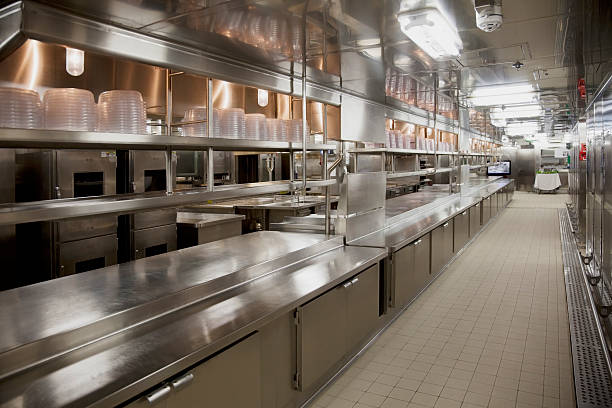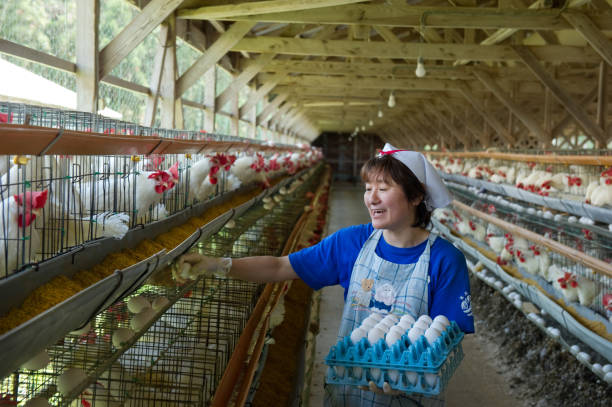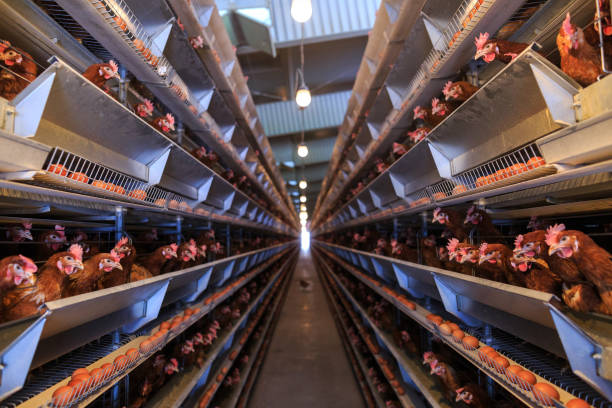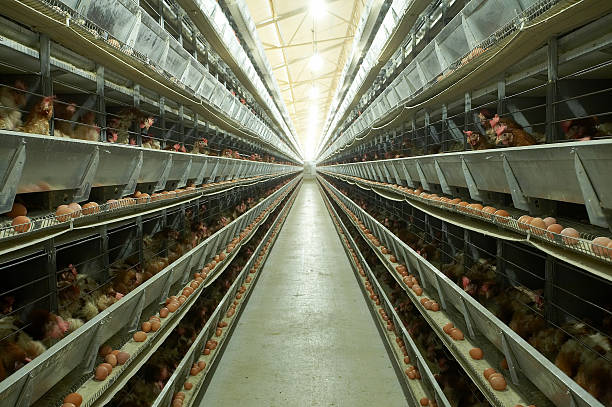
High-Capacity Layer Cage System for 100,000 Birds – Optimized for African Poultry Farms
High-Capacity Layer Cage System for 100,000 Birds – Optimized for African Poultry Farms
As poultry farming continues to evolve, especially across Africa, there’s increased interest in large-scale, high-efficiency farming methods. Among the most effective solutions for modern poultry farms are high-capacity layer cage systems. These systems are increasingly favored by commercial egg producers looking to maximize output and efficiency while managing costs in a balanced way.
A high-capacity layer cage system designed for 100,000 birds is not just about numbers — it’s about creating a sustainable, scalable, and profitable enterprise. With Africa’s growing population and rising demand for quality protein sources like eggs, the opportunity to invest in large-scale poultry operations has never been better. Whether you’re a seasoned breeder or just entering the poultry business at scale, understanding the benefits and logistics behind such a system is crucial.
Why a 100,000-Bird Layer System Makes Sense for African Farmers
Africa’s market for poultry products, especially eggs, is booming. Urbanization, rising disposable incomes, and the increasing need for affordable, consistent protein sources have all fueled demand. To meet this growing need efficiently, many farmers are turning to automated, high-volume systems that allow for consistent egg production with minimal waste and labor.
A 100,000-bird layer farm isn’t just about managing a large number of birds. It’s about optimizing every aspect of operations — from feeding and water supply to waste management and disease control. The system must be efficient not only at a technical level but also in terms of economic viability for African conditions.
Layer cages offer several advantages over traditional floor or free-range systems, especially at this scale. They help in optimizing space while maintaining bird health and productivity. In a cage system, birds are kept in controlled environments where feed intake, health, and stress can be better monitored. This leads to healthier flocks and higher egg output.
For African conditions, where resources like water and labor may be limited in some regions, these layer cages are an efficient and practical solution. Additionally, they can be tailored to handle the continent’s unique climate challenges, including high temperatures or dust-filled environments.
Designing the Perfect High-Capacity Layer Cage System
When designing a layer system for 100,000 birds, it’s essential to plan every detail carefully. From housing structures to feeding and manure removal systems — every element impacts the efficiency and profitability of the operation.
The first thing to consider is the cage layout. Typically, layer cages for large-scale farms use either a three-tier or four-tier system. This allows for maximum use of vertical space, which is especially important in areas where land might be limited or expensive. Each tier is fully equipped with automated feeders, drinkers, and egg collection belts.
Another critical factor is ventilation. In Africa’s hot climates, ensuring proper airflow is vital. Modern layer cages systems use tunnel ventilation or cooling pad systems to keep the house at optimal temperatures for egg production. These systems not only cool the house during hot periods but also improve air quality and help in disease prevention.
The feeding system should also be automatic, with chain feeders or spiral feeders ensuring that each bird gets consistent access to feed without waste. Water lines with drinking nipples help maintain clean water and prevent contamination or spillage.
Egg collection is another important aspect. For a 100,000 bird operation, a fully automated egg belt system significantly reduces hand labor and prevents eggs from getting dirty or broken. Centralized collection areas with packing lines can further streamline processing.
Optimizing for African Conditions
Africa is a vast and diverse continent. What works in one region might not necessarily suit another. Therefore, when setting up a high-capacity layer cage farm, customization is key.
Climate Adaptation
In sub-Saharan Africa and other tropical zones, intense heat can affect both bird comfort and production levels. Cooling systems like pad cooling or misting can be integrated with tunnel ventilation to maintain a comfortable indoor temperature of around 20–25°C — ideal for laying hens.
Dust and high humidity in some areas require additional attention. Cage systems should be equipped with dust-resistant components and anti-microbial water systems to avoid bacterial growth and disease risk.
Energy Efficiency and Backup
Power supply can be unreliable in many African countries. A reliable system should include backup energy solutions like solar power or diesel generators to ensure uninterrupted operations — especially for ventilation and feeding systems.
Biosecurity

Disease control is critical in intensive farming. A large operation with 100,000 hens can be devastated by an outbreak of highly contagious diseases such as Newcastle or E. coli. A well-designed layer cage system includes features like:
Closed building design to prevent wild birds or rodents from entering
Footbaths and disinfectant stations at entry points
Separate compartments within the poultry house to prevent cross-infection between sections
Routine health monitoring tools
Labor and Maintenance
While automation reduces reliance on manual labor, skilled management oversight is still necessary. Training local workers in modern poultry farming techniques is crucial. This makes the entire system not only efficient but also sustainable over the long term.
Infrastructure and Management Considerations
Setting up a high-capacity layer farm requires more than just cages and automation — it needs robust supporting infrastructure.
Housing Structure
The building must be constructed with durable, climate-resistant materials to ensure a long service life. Galvanized steel frames with insulated roofs are ideal for durability, thermal regulation, and protection against pests.
Feeding and Water Systems
Feed storage silos are essential to store large quantities of feed safely away from moisture and pests. Water storage tanks with backup purification systems ensure a continuous supply of clean water.
Waste Management
Proper manure management is crucial in such a large-scale operation. Belt systems under cages collect droppings efficiently, and in some set-ups, drying systems are used to reduce moisture and odor. Some farms also explore composting manure to create fertilizer — an added revenue stream.
For maximum profitability, consider incorporating an egg grading and packaging line. This eliminates dependency on off-site processing, reduces eggbreakage rates, and accelerates time-to-market.
Financial Planning and ROI
Investing in a layer cage system for 100,000 birds involves substantial initial capital. The total cost can range from $80,000 to $120,000 depending on the level of automation, cage materials, and regional price variations.
Despite the high upfront cost, the return on investment (ROI) makes this a compelling opportunity. On average, a well-managed laying flock can start laying eggs at 18–20 weeks and remain productive for up to 80 weeks. At peak laying, a single hen can lay 300+ eggs per year. This means a 100,000-bird farm can potentially generate around 10,000 dozen eggs per day, depending on breed and management practices.
To calculate ROI, consider all operational costs including feed, labor, veterinary supplies, maintenance, and energy, and compare them with current egg market prices in your region. The key is to ensure low feed conversion ratio (FCR), high laying rates, and strong market access for eggs.
Choosing the Right Partner
When setting up a 100,000-bird layer farm, choosing the right equipment supplier can make or break the operation. The cages, feeding systems, and house designs need to be specifically tailored to African conditions.
Livi Machinery is a global leader in manufacturing and exporting poultry equipment, including high-capacity layer cage systems. Our systems are designed with modularity, scalability, and adaptability in mind. We offer complete turnkey solutions — including cages, feeders, drinkers, manure removal systems, controllers, and even installation support, making implementation seamless regardless of experience level.
We’ve helped many farmers across Nigeria, Kenya, South Africa, Ghana, and Uganda establish profitable and productive poultry farms using our systems. Our engineers can customize cage design and layout to match specific farm requirements, climates, and regulatory standards.
Additionally, Livi offers comprehensive training programs and post-purchase support to ensure clients can start up and maintain their farms smoothly and without complications.
Sustainability and Long-Term Business Growth
Modern poultry farming, especially at large scale, needs to align with sustainability principles. With the right management, a 100,000-bird layer farm can be:
Energy efficient via solar lighting and ventilation
Water responsible through closed-loop water systems
Environmentally friendly through proper waste management practices
Economically sustainable, offering long-term profitability with proper planning and execution
Furthermore, this level of farming can play a vital role in food security across Africa. As a single farm of this size can supply thousands of families with consistent egg access, it contributes to nutritional and economic resilience in local communities.
Conclusion: A High-Potential Venture for the African Market

In conclusion, a high-capacity layer cage system designed for 100,000 birds is a sound investment for African poultry producers aiming to scale successfully. It combines efficiency, productivity, and sustainability while adapting to local environmental and operational challenges.
With the right equipment, such as those available from Livi Machinery, and a strong operational plan in place, poultry farmers can maximize output, reduce losses, and build a thriving agribusiness. Whether you’re investing independently, collaborating with investors, or part of a government-led initiative, the potential for success is enormous.
Eggs remain a cornerstone of modern diets — affordable, nutritious, and versatile — and as local demand keeps growing, there’s never been a better time to bring your poultry operations to large-scale with a modern, optimized layer cage system.

